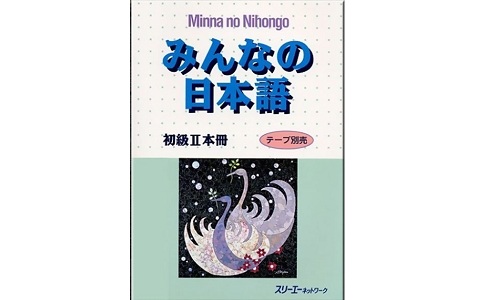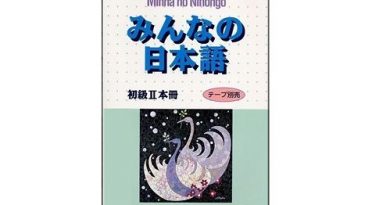Learn minna no nihongo lesson 4
Learn minna no nihongo lesson 4. hi everyone. In this post, Learn Japanese Daily will introduce you the very first lessons in the Japanese course-book : Minna no nihongo (Japanese for everyone)
Learn minna no nihongo lesson 4:
In lesson 4 learners will learn completely new things, its verb, which is indispensable in the system of language, and how to watch clock.
First is the vocabulary. The subjects today involve: action verb, status; time, agency, cardinal number; days in week and the last is some communicative structures.
First, action verbs and statuses:
おきます : wake up
ねます : sleep
はたらきます: work
やすみます: take rest, off
べんきょうします : study
おわります: end, finished
Next is time:
いま : now
じ : hour
ぶん : minute
はん : half, quarter
なんじ : What time?
なんぶん : How many minutes?
ごぜん : before 12a.m
ごご : after 12a.m
あさ : morning
ひる : afternoon
ばん : evening
おととい : day before yesterday
きのう : yesterday
きょう : today
あした : tomorrow
あさって : day after tomorrow
けさ : this morning
こんばん : tonight
やすみ : vacation,holiday
ひるやすみ : lunch break
まいあさ : every morning
まいばん : every night
まいにち : every day
Next, word about agency:
デパート : Department
ゆうびんきょく : post-office
としょかん : library
びじゅつかん : museum of art
Days in week:
げつようび : Monday
かようび : Tuesday
すいようび : Wednesday
もくようび : Thursday
きんようび : Friday
どようび : Saturday
にちようび : Sunday
To ask about what day is it? it will be なんようび
Next, the cardinal numbers:
ばんごう : telephone number
なんばん : What number
Some communicative structures:
~から : From
~まで : to
と means “and” to connect two words
そちら : That person
たいへんですね : That’s tough
When thinking about things you want to say, Japanese people say えーと as a filler word.
And the last one, お願いしますmeans please or I’m looking forward to your help. Next, let’s move on to the Grammar part.
The first structure in this lesson is about time. Similar to the way to count money, the way to learn how to count is the first structure we had learned in primary lesson. In this part, the lesson will introduce to learners how to count hours, minutes.
First, to show the time, learners need to add the number before time nouns, same as in English.
There are somethings to pay attention for:
For minutes: ふん, with numbers 2 5 7 9 it will be にふん、ごふん、ななふん、きゅうふん、 and ぷんwith numbers 1 4 6 8 and it has phonetic variantいっぷん、よんぷん、ろっぷん、はっぷん ぶん with number 3 さんぶん. Besides that, in hours pay attention to 4h, 7h and 9h, よじ、しちじ、くじ.
When asking about time, なん put before time nouns. For example: “What time is it?” いま なんじですか
There is one thing learners need to focus: in lesson 1 the practicalはis used to express the subject of the sentence. The example in here the practical は is put after place nouns
For example: フランスは いま なんじですか。 ごぜん4じ means “What time is it in France?” “4 a.m”
Next, the second structure, which is the polite verb ます. It is the verb that learners learn in the vocabulary part.
The verb ますact as predicative. It shows the politeness of the speaker to the listener.
For example, 私は まいにち べんきょうします means “I study every day” べんきょうします means study stand after the practicalは in sentence.
When learning a verb, students have to know the affirmative and negative part of the verb, and how it is changed in present, past, future tense… The verbます is also the same.
ます is used to express the habit of present or the truth, it also expresses the things happen in the future.
For the affirmative form of ます, in present it’s still ますbut in past tense it has to change ます into ました.
For example : まいあさ6時におきます… means “ I wake up at 6.am every morning”
But if : けさ6時におきました , “This morning i woke up at 6a.m” . This is an action happened in the past, not an everyday habit.
In the negative part of ます, in the present it isません, in the past it isませんでした.
Next, the interrogative sentence. Same as affirmative form, interrogative sentence doesn’t change the order. Just need to put かat the end of the sentence. And the answer for this question, we also have to answer the verb tense. Remember to see the tense of the question.
For example きのうべんきょうしましたか. This is a question because it has かat the end and the order of the sentence is same as affirmative sentence “Did you study yesterday?”
To answer we choose はい or いいえ , for example はい the verb is repeat in affirmative
はい、べんきょうしました “Yes, I studied yesterday.”
The fourth structure has the meaning: Doing what and where. The structure: time nouns combine with に and verb. When we want to say the moment of doing something, put the practical に after time nouns,
に is only use in case the action happened in a short time and combine with the time (precisely what time). It means we don’t use にfor general time.
However, in days of week, we can useに. For example i want to say “I wake up at 6 o’clock” 私は6時におきます or
7月みっかに日本へいきますmeans in “I will go to Japan in 3rd July”.
Next is the 5th structure: N1からN2まで means come from… or from…to,
からexpress the the starting time or point and まで expresses the destination or time. For example “I work from 7 a.m to 5p.m” we will say7じから5じまで はたらきます
There is also one thing to note: からーまでis not needed to be linked together, we can separate it to use in a sentence:7じから はたらきます “I work from 7 a.m” or 5じまではたらきます“i work until 5p.m”
Next structure is with and to connect 2 sentence or words N1とN2. Suppose that connect 2 nouns Saturday and Sunday to make a sentence “The bank close in Saturday and Sunday”, practicalと is used in case: ぎんこうのやすみは どようびと にちようびです.
Remember the lessons will get more difficult and the amount of knowledge learners need to learn will certainly grow. The last structure of this lesson that is ね …It is added in the end of the sentence to show the sympathy or agreement of the speaker to the listener.
For example まいにち10まで べんきょうします。たいへんですね means “Everyday I study until 10.pm” “That’s tough”.
The phrase たいへんですね shows the sympathy to the speaker. Besides ねshow the high expectations of the listener, specific it is to confirm an information. For example to confirm the phone number of Mr. Yamada
山田さんのでんわばんごうは12345です. The phone number is 11 2 3 4 5 You ask:12345ですね (1 2 3 4 5 right?)
All 7 structures of this lesson has finished To furthermore understand all the structures, let’s practice.
The case of the dialogue is: “Aki calls to the art museum to ask about the opening time.”
When the telephone rings the staff of art museum picks up and answer:
もしもし。やまとびじゅつかんでございます “Hello, I’m Yama from art museum please”. (もしもし = Hello when answering phone)
Aki: すみません、そちらは何時から何時まで はたらきますか “Excuse me, may I ask for the working time here please?
The staff: 9時から4時までです “From 9 a.m to 4p.m”
Aki: やすみは なんようび ですか “So, what day is the day-off?”
The staff: げつようびです “Is Monday”
Aki: わかりました。ありがとうございます “I got it. Thank you very much”
Because the topic of the lesson today is “Telephone and mail”, the reference words will also be related to the topic. Here are some emergency numbers in Japan. It is necessary to know, especially for those who live and work in Japan.
110: police station 警察署 (けいさつしょ)
119: Fire station 消防署 (しょうぼうしょ)
117: Announcement of time 時報 (じほう)
177: weather information 天気情報 (てんきじょうほう)
104: instruction of using phone numbers 電話番号案内 (でんわばんごうあんない)
Next, the culture corner. Instead of giving learners a song, in this lesson learners will be given a small present that is a video clip of a Japanese introducing Japan as, a weird country. Learners will see the general and specific characteristics of Japanese culture and custom.
Above is Learn minna no nihongo lesson 4. Check out other similar lesson in category : learn japanese for beginer or learn japanese with minna no nihongo. We hope with the instruction in this post, you will find that learning Japanese is not so difficult and you can learn Japanese by yourself. If you have any question, just leave us your question below the post.
Stay with us on :
Facebook - Twitter - Pinterest - Reddit


